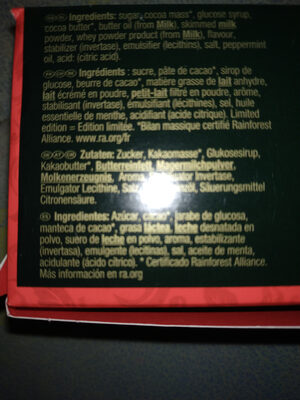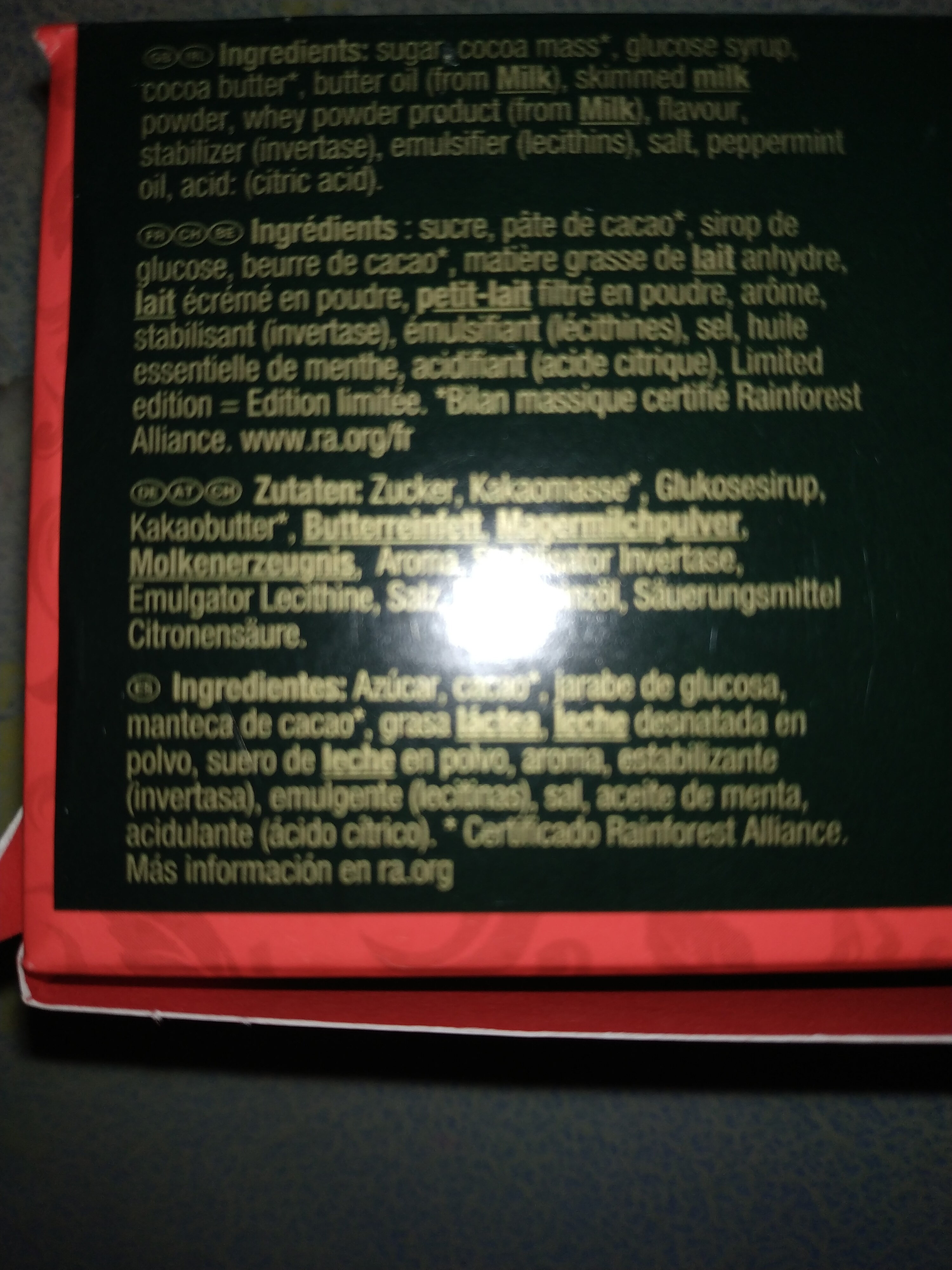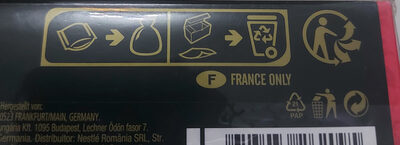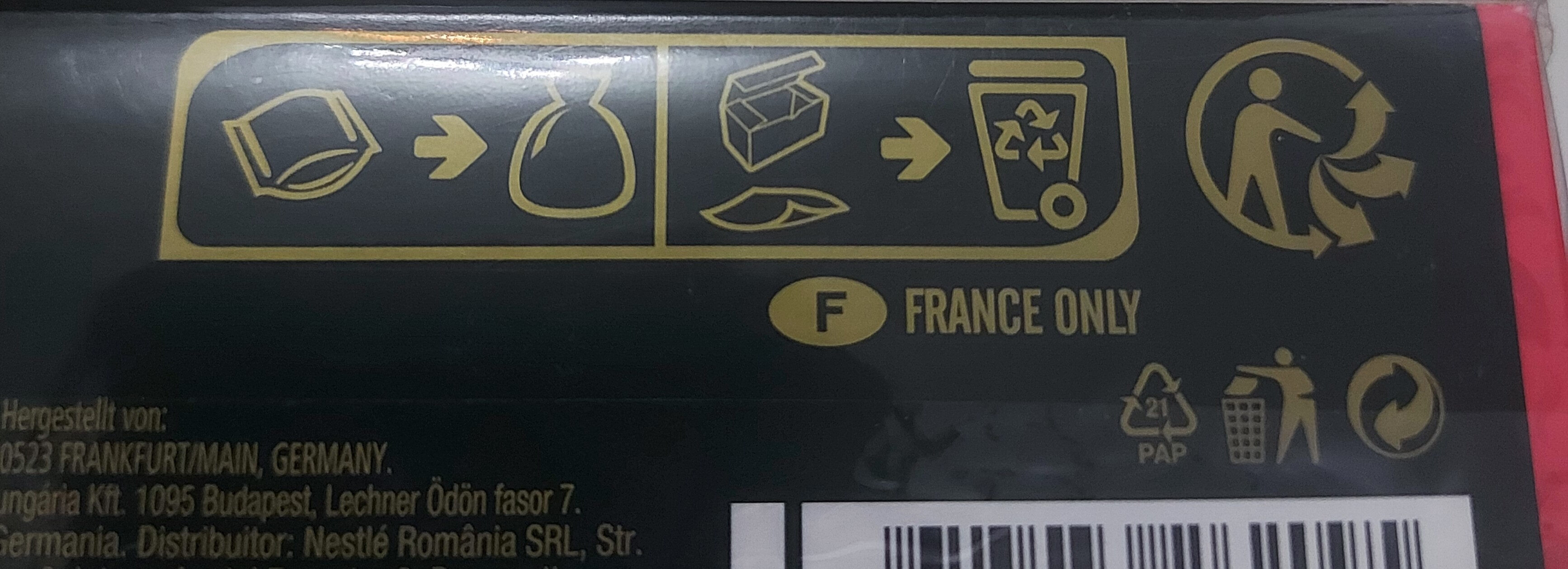Šok. sald. NESTLÉ AFTER EIGHT STRAWBERRY, 400 g
This product page is not complete. You can help to complete it by editing it and adding more data from the photos we have, or by taking more photos using the app for Android or iPhone/iPad. Thank you!
×
Some of the data for this product has been provided directly by the manufacturer NESTLE FRANCE. - Customer service: Contact form 0 809 400 412 (service gratuit + prix de l'appel)
Barcode: 7613036262095 (EAN / EAN-13)
Common name: Fines feuilles de chocolat noir (39,6%) fourrage (60,4%) à la menthe saveur fraise
Quantity: 400 g
Packaging: Cardboard
Brands: Nestlé, After eight
Categories: Snacks, Sweet snacks, Cocoa and its products, Chocolates, Dark chocolates
Labels, certifications, awards:
Nestlé Cocoa Plan, Rainforest Alliance, Triman

Manufacturing or processing places: Allemagne
Matching with your preferences
Other information
Preparation: Produit prêt à consommer
Conservation conditions: A conserver dans un endroit frais et sec.
Customer service: Nestlé France, 34-40 rue Guynemer 92130 Issy-les-Moulineaux
Report a problem
Data sources
The manufacturer NESTLE FRANCE uses Equadis to automatically transmit data and photos for its products.
Product added on by kiliweb
Last edit of product page on by org-nestle-france.
Product page also edited by analei, foodless, ninehadi, openfoodfacts-contributors, scanbot, yuka.J55yPeW0Pe8cEcjMwYArzjSfBtbhIc5BPEAjog, yuka.sY2b0xO6T85zoF3NwEKvlh0ZTtyB_TT2ZgTRtU-GyfuRCsfwTPJ8yI6qaKo, yuka.sY2b0xO6T85zoF3NwEKvllNgV-XnpzSfGQPgi3XbnY3fccPGX9hK3azqbKs, yuka.sY2b0xO6T85zoF3NwEKvlnxnS_n3mmPCOAfmiXW2nPe8d8XaSs9Y89P6b6o.












